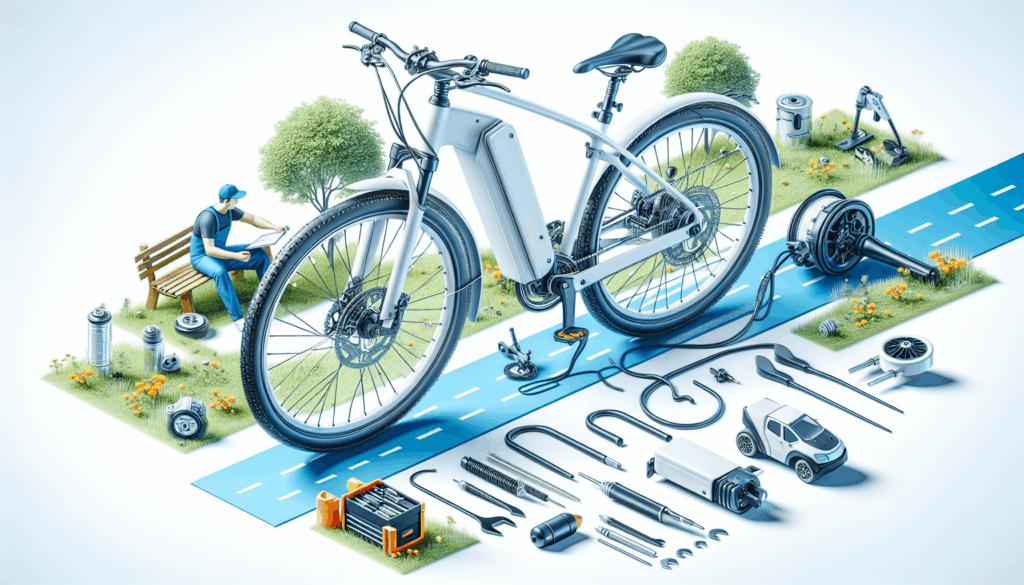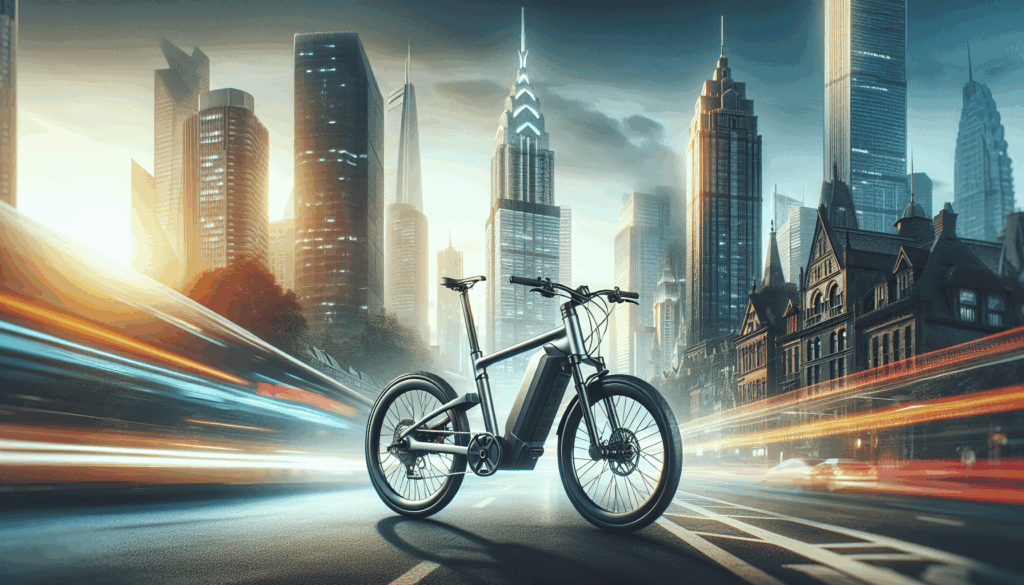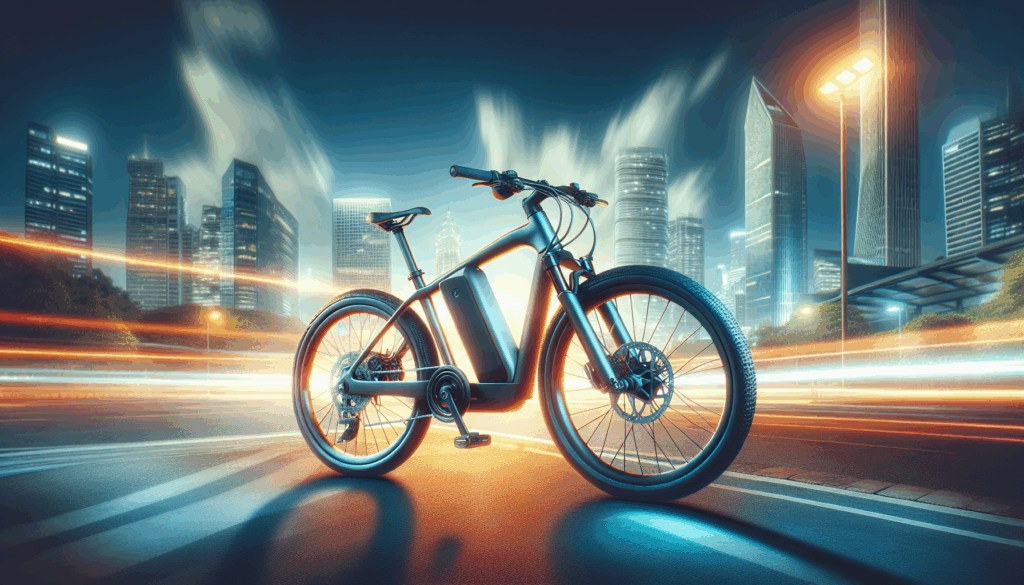
Electric bicycles have revolutionized the way we travel, offering an eco-friendly and efficient alternative to traditional biking. Whether you own the ADO A20 Lite or ADO A20 Air, understanding the fundamentals of your electric bicycle and the necessary maintenance is crucial for ensuring optimal performance and longevity. These two models come equipped with powerful features, such as a 36V 9.6Ah Li-ion battery providing a commendable range of approximately 60km, making them perfect companions for your daily commute or leisurely rides. By taking the time to learn about the essential maintenance tips, you’ll not only extend the life of your e-bike but also enhance your riding experience.
Understanding Electric Bicycle Components
Understanding the components of an electric bicycle is crucial for maintaining its performance and longevity. At the heart of any electric bike, including models like the ADO A20 Lite and A20 Air, is the battery. Both models are equipped with a 36V 9.6Ah Li-ion battery, providing a range of about 60km on a full charge. This battery powers the electric assist modes, which aid the rider in challenging terrains or long distances.
Additionally, understanding the braking system is essential; the A20 Lite uses mechanical disc brakes, while the A20 Air is fitted with more advanced hydraulic brakes, providing different levels of responsiveness and stopping power for various riding conditions. A reliable belt system ensures a smooth ride while minimizing maintenance needs compared to traditional chains.
The Importance of Regular Battery Maintenance
One of the most crucial aspects of maintaining an electric bicycle, like the ADO A20 Lite or ADO A20 Air, is ensuring the battery remains in optimal condition. Both models are equipped with a 36V 9.6Ah Li-ion battery that boasts a range of about 60km. Regular maintenance of the battery includes checking for any corrosion on terminals, ensuring that connections are secure, and keeping the battery clean and dry. Moreover, it’s important to avoid letting the battery fully discharge too often, as this can shorten its lifespan.
Following manufacturer guidelines for charging and storage will help maintain the health of the battery over time, ensuring you get the most out of your electric bicycle while enjoying a smooth and efficient ride. In addition to routine inspections, adopting good charging practices is essential. Lithium-ion batteries thrive on being charged regularly rather than waiting until they are completely drained. For instance, if you frequently ride your ADO electric bicycle, consider charging it after each use, especially if you’re planning longer rides.
This will not only extend battery life but also ensure that you can take advantage of the electric assist modes available. By prioritizing regular battery maintenance, you can enhance the overall performance and longevity of your electric bicycle, providing a reliable mode of transport for years to come.
How to Care for the Belt System in Your E-Bike
The belt system of your electric bicycle is a crucial component that demands regular attention to ensure optimal performance and longevity. Unlike traditional chain systems, belts are known for being low maintenance and quieter, but they still require some care. Regular inspection of the belt for any signs of wear, fraying, or damage will help you catch potential issues early. It’s essential to keep the belt clean and free from debris, as dirt can lead to a decrease in performance and even cause premature wear. Periodically, check the tension of the belt; it should have the right amount of tension to avoid slippage or over-tightening, which could strain the motor and other components.
Regularly lubricating the belt can also prolong its life and contribute to a smoother ride. In addition to the belt itself, it’s important to keep the surrounding components in good condition. Clean the area around the belt to prevent dirt from being transferred onto it, and ensure that the pulleys are functioning correctly and are aligned properly. If you own an ADO A20 Lite or A20 Air, make sure to refer to the user manual for specifications on maintenance frequencies. Following these simple maintenance tips can help ensure that your e-bike‘s belt system remains in great shape, providing you with a reliable and enjoyable riding experience for years to come.
Maintaining Your Electric Bicycle’s Braking System
Keeping your electric bicycle’s braking system in good condition is essential for safe, reliable riding—especially since ebikes often travel faster and carry more weight than regular bikes. For mechanical disc brakes, check the brake pads regularly for wear; replace them when they’re worn down to 1–2 mm of material. Make sure the brake cables are clean, properly tensioned, and free of rust or fraying.
If your ebike has hydraulic disc brakes, inspect the brake pads and rotors, and check for any fluid leaks around the calipers and levers. Periodically bleeding the hydraulic lines helps remove air bubbles that can reduce braking power and ensures smooth, consistent performance.
For both systems, keep the rotors clean—wipe them with isopropyl alcohol to remove oil and dirt, which can cause squeaking or reduced stopping power. Also, make sure the brake levers engage smoothly without sticking.
Regular maintenance not only extends the life of your braking system but also keeps your rides safe and predictable, giving you confidence to stop quickly and stay in control—whether you’re commuting through traffic or cruising down a steep hill.

Tips for Keeping Your Electric Bicycle Clean and Functional
Keeping your electric bicycle clean and functional is essential for ensuring its longevity and optimal performance. Regular maintenance should start with the exterior, where dirt and grime can accumulate over time. It’s important to use a mild detergent and a soft cloth to gently clean the frame, battery, and other components of your bike. Avoid using a high-pressure washer as this can cause damage to electrical components and seals. Additionally, check the brakes regularly, particularly the mechanical disc brakes on the ADO A20 Lite or the hydraulic brakes on the ADO A20 Air, ensuring they are free from debris and functioning correctly.
A clean bicycle not only looks better but can also help you identify potential issues before they become serious problems. Equally important is the maintenance of the electrical components of your e-bike. Regularly inspect the belt system and cadence or torque sensors, depending on your model. Ensure that connections are secure and free from corrosion, which can hinder performance. It’s also wise to charge your 36V 9.6Ah Li-ion battery correctly and store it in a cool, dry place when not in use, as this prolongs battery life and promotes a longer range of up to 60km. By following these cleaning and maintenance tips, you can keep your electric bicycle running smoothly for many rides to come.
Safety Checks: Ensuring Your E-Bike is Road-Ready
Before heading out for a ride on your electric bicycle, it’s crucial to perform safety checks to ensure your e-bike is road-ready. Start by inspecting the brakes—ensure that they are responsive and functioning properly, as mechanical disc brakes, like those on the ADO A20 Lite, can be sensitive to wear. For models with hydraulic brakes, such as the ADO A20 Air, checking fluid levels is equally important. Next, take a moment to assess the battery charge and range; a fully charged 36V 9.6Ah Li-ion battery provides an impressive range of approximately 60km. Additionally, inspect the tires for proper inflation and tread wear to prevent any accidents on the road.
Regularly checking these components can enhance your riding experience and ensure safety on every journey. Another essential part of your safety check is examining your e-bike’s electrical assist modes. Understanding how to switch between the three electrical assist modes not only improves efficiency but also helps in adapting to different terrains and conditions. Given that both the ADO A20 Lite and the ADO A20 Air support three assist modes, familiarizing yourself with their functionality is vital. Lastly, ensure that your e-bike frame and belt system are free from any damage, providing overall stability while riding. By attending to these safety measures, you can enjoy your rides with confidence and peace of mind.
Maximizing the Longevity of Your Electric Bicycle
To maximize the longevity of your electric bicycle, start with regular inspections of its key components. Ensure that the battery is well-maintained, as it significantly influences performance. For models like the ADO A20 Lite and ADO A20 Air, both equipped with a 36V 9.6Ah Li-ion battery offering a range of approximately 60 km, it’s essential to avoid letting the battery fully discharge. Instead, try to charge the battery when it reaches about 20-30% capacity. Additionally, clean the electrical assist system and check connections regularly to prevent rusting or corrosion, which could deteriorate performance over time.
Troubleshooting Common Electric Bicycle Issues
Understanding common issues with your electric bicycle is key to maintaining its performance and longevity. One frequent problem users encounter is a decrease in battery life. Factors such as environmental conditions or improper charging habits can lead to reduced range. To troubleshoot this, ensure that the battery is regularly charged after each ride and check for any loose connections that might affect performance. Additionally, if you notice a decline in pedal assist power, it may be due to a malfunctioning sensor, either cadence or torque depending on the model.
Regular inspections of these components can identify issues before they become significant problems. Another common area of concern is the braking system. In models like the ADO A20 Lite with mechanical disc brakes, users should regularly check for wear and tear on the brake pads and ensure proper adjustment for optimal stopping power. Conversely, the ADO A20 Air comes with hydraulic brakes, which typically require less maintenance but should be monitored for fluid levels and any air bubbles in the lines. Keeping these critical components in check will ensure your electric bicycle operates smoothly and safely, allowing you to enjoy each ride with peace of mind.

Final Thoughts on Electric Bicycle Maintenance
Taking care of your electric bicycle is an essential aspect of ensuring its longevity and maintaining its performance. Whether you own the ADO A20 Lite or the ADO A20 Air, both models benefit from regular maintenance checks, including ensuring the brakes are functioning well and keeping the battery charged and in good condition. By adhering to routine practices such as checking the belt system and keeping the cadence or torque sensor calibrated, you can enjoy a smooth ride for years to come. Remember, a clean electric bicycle is a happy electric bicycle, so don’t overlook the importance of regular cleaning and inspection to catch any potential issues before they escalate.
Moreover, understanding the specifications of your specific model can further enhance your maintenance routine. With both ADO A20 models offering a maximum load of 100kg and a battery range of about 60km, knowing how to manage these features efficiently can optimize your riding experience. Take the time to integrate these maintenance tips into your routine and you’ll surely unlock the full potential of your electric bicycle, ensuring it remains not only a reliable mode of transport but also a source of joy and adventure.
